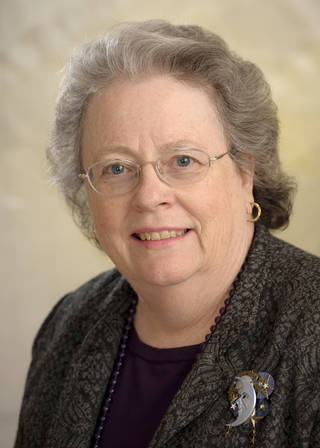Sharing the Sky
"Ibegan as an amateur, then I became a professional astronomer, and in retirementI am an amateur again."
– Dr. BartBok, leading expert of the 20th century on the Milky Way.
Astronomersare stargazers. Whether simply standing outside identifying a constellation fora child or employing the Hubble Space Telescope to search for the most distantobjects in our universe, we all share the same universe. Unlike nuclear physicsor molecular biology, astronomy is accessible to both amateurs andprofessionals. Sometimes, it's difficult to distinguish between them.
In "ScienceEducators Under the Stars: Amateur Astronomers Engaged in Education and PublicOutreach," Marni Berendsen and Martin Storksdieck identified threesorts of amateurs:
- Research level amateur astronomers
- Astronomy enthusiasts
- Observing amateur astronomers
Theresearch level amateur astronomers have a long and valued relationship with theprofessionals. The AAVSO (AmericanAssociation of Variable Star Observers) has collected data used byprofessionals for almost a century. More recently, amateurs have joinedprofessionals in successful ground-based searches for transiting planets, whichhave been published as peer-reviewed papers in professional journals such as AstrophysicalJournal. "Tooled-UpAmateurs Are Joining Forces with the Professionals" (Science, Oct.12, 2007) describes these pro-am partnerships, and points to work being led byRick Feinberg, editor of Sky and Telescope, to set up a registry forpro-am collaborations through the American Astronomical Society.
Astronomyenthusiasts are what I think of as armchair astronomers. Perhaps they own anduse a telescope, but more likely they enjoy astronomy via books, magazines suchas Sky and Telescope and Astronomy, and television and IMAXproductions. Access to astronomy and space science has blossomed on theinternet with Google Sky and Microsoft'syet-to-be-released World Wide Telescope project: Both aim to make astronomicaldiscoveries more accessible to all of the public. I enjoy the Astronomy Picture of the Day,which delivers a tantalizing astronomical image each day. And, of course there'sSPACE.com bringing daily astronomy and spacescience to the public plus blogs, and podcast science program such as the SETIInstitute's weekly science program, "AreWe Alone?" There's a veritable feast of astronomical information tograze on. Berendsen and Storksdieck estimate that there are 300,000 to 400,000such enthusiasts in the US alone.
Observingamateur astronomers are out at night with their telescopes, enjoying andsharing the universe. There are about 750 amateur astronomy clubs with anestimated membership of 50,000. The AmericanAstronomical Society, the major organization of professional astronomers,has a membership of about 7,350. The number of amateur astronomers far exceedsthe ranks of the professionals. For most of the public, personal contact withan astronomer is very likely to be with an amateur astronomer.
Get the Space.com Newsletter
Breaking space news, the latest updates on rocket launches, skywatching events and more!
NASA-JPL'sNavigator Education and Public Outreach program and the Astronomical Society of the Pacific havepartnered with the amateurs nationwide to form the Night Sky Network (NSN). Several NASAMissions – including the Kepler Mission that Iwork upon – have collaborated with the NSN to create kits of simpledemonstrations to assist amateurs with outreach. Beginning in March 2004, theNSN has recruited amateur astronomy clubs that conduct outreach for the public.The NSN provides the kits of support materials to clubs, and the club membersreport on their outreach activities in return. Since 2004, the astronomy clubsin every state and Puerto Rico have reached out to more than 580,000 people toshare the sky. This highly successful program continues to expand as more clubsjoin in.
Along withsupporting outreach by amateurs, ASP has also worked with amateurs astronomersto understand the community, their needs, and their best practices. "ScienceEducators Under the Stars" (edited by Michael Gibbs, Berendsen andStorksdieck) captures the spark of excitement that amateur astronomers enjoyand share. This is an excellent handbook that describes the best practices andexperiences of amateur and professional astronomers alike in conducting outreach.
I have mycopy, and recommend it to anyone interested in learning more about sharing thesky.
- Skywatching: FAQ
- Welcome to Astronomy: Getting Started
- Guide to Telescopes, Binoculars & Accessories
Join our Space Forums to keep talking space on the latest missions, night sky and more! And if you have a news tip, correction or comment, let us know at: community@space.com.

Edna DeVore is a science and astronomy educator and the former Director of Education and Public Outreach for the SETI Institute. She earned an undergraduate degree from the University of Pacific followed by a master's degree in instructional technology from San Jose State and a master's in astronomy from the University of Arizona. In 1992, Edna joined the SETI Institute, where she wrote features on space exploration, astrobiology and more, some of which appeared on Space.com. She was among the first principal investigators to propose projects to NASA's Office of Space Science and receive funding for educational programs. Edna went on to work on education and public outreach for NASA's Kepler space telescope and SOFIA flying telescope missions. Edna received numerous awards during her tenure at SETI, including NASA Honor Awards for her work on Kepler and SOFIA, and Aerospace Awareness Award for Women in Aerospace in 2005. Edna retired in 2013.









